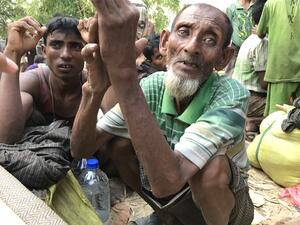New statistical overview
New statistical overview
UNHCR's latest global statistics on refugees and others of concern are now available. The 1999 Statistical Overview, produced by the Programme Coordination Section of UNHCR's Registration and Statistics Unit, provides comprehensive information on asylum-seekers, refugees and others of concern to UNHCR in some 150 countries. Some of the main observations are:
At the end of 1999, the total population of concern to UNHCR had reached some 22.3 million persons, including 11.7 million refugees (53%), 1.2 million asylum-seekers (5%), 2.5 million returned refugees (11%), 4 million internally displaced (18%, this concerns IDPs with whom UNHCR is concerned only), 1.4 million returned IDPs (6%) and 1.5 million others of concern to the Office (7%).
During 1999, the global refugee population increased by some 1.6 per cent to reach some 11.7 million by the end of the year.
By the end of 1999, Asia hosted the largest refugee population (41.0%), followed by Africa (30.2%), Europe (22.3%), North America (5.4%), Oceania (0.6%) and Latin America and the Caribbean (0.5%).
When all persons of concern to the Office are considered, Asia hosts only slightly more people (32.8%) than Europe (32.7%). Africa hosts 28.1% of all persons of concern, followed by North America (5.6%) and Latin America and the Caribbean and Oceania (each 0.4%).
During 1999, 1.7 million refugees became displaced on a group basis. At the same time, some 1.6 million refugees returned to their home country, 60% more than during 1998 (1 million).
UNHCR assisted in the resettlement of almost 29,000 refugees from first asylum countries during 1999, an increase of 36% compared to 1998 (21,200 persons).
There are virtually as many males as females among the population of concern to UNHCR. Some 50.8% of the population for which data is available (5.4 mln.) are female. In the category aged 60 and over, however, the proportion of females is 56%, reflecting the longer life expectancy for women in general.
Some 12% of the population for which information was available were under the age of 5, whereas 41% was aged below 18. The survey shows significant differences in age composition between world regions, a reflection of global demographic trends. Thus, In Africa, 49% of the surveyed population was under the age of 18, whereas in Europe this was 20%. Conversely, 15% of the population in Europe is aged 60 and over, compared to only 3% in Africa.
The number of asylum applications submitted in 33, mostly industrialized, countries increased by some 20%, from 449,000 in 1998 to 538,000 in 1999. In these countries, 18% of all asylum decisions taken during 1999 resulted in refugee status under the 1951 UN Convention, slightly more than in 1998 (16%). When the granting of humanitarian status is included, the percentage of recognized asylum-seekers reached 35% in 1999, significantly higher than in 1998 (27%).
During the period 1990-1999, some 4.3 million asylum applications were submitted in 19 European asylum countries. The Federal Republic of Yugoslavia (including citizens of the former Yugoslavia) was the leading country of origin, accounting for 20% of all asylum-seekers, followed by Romania (9%) and Turkey (8%).









